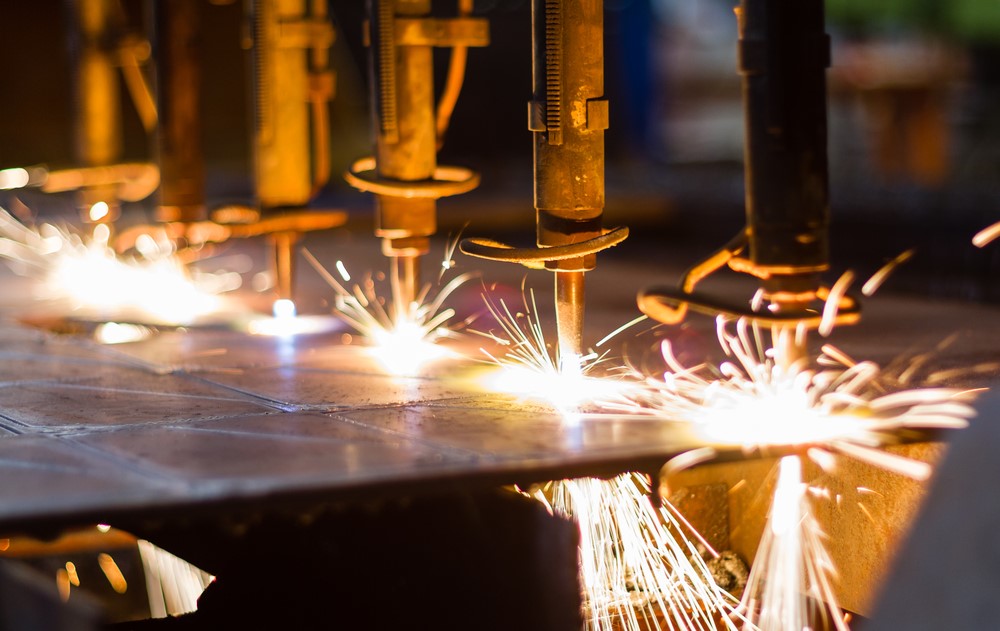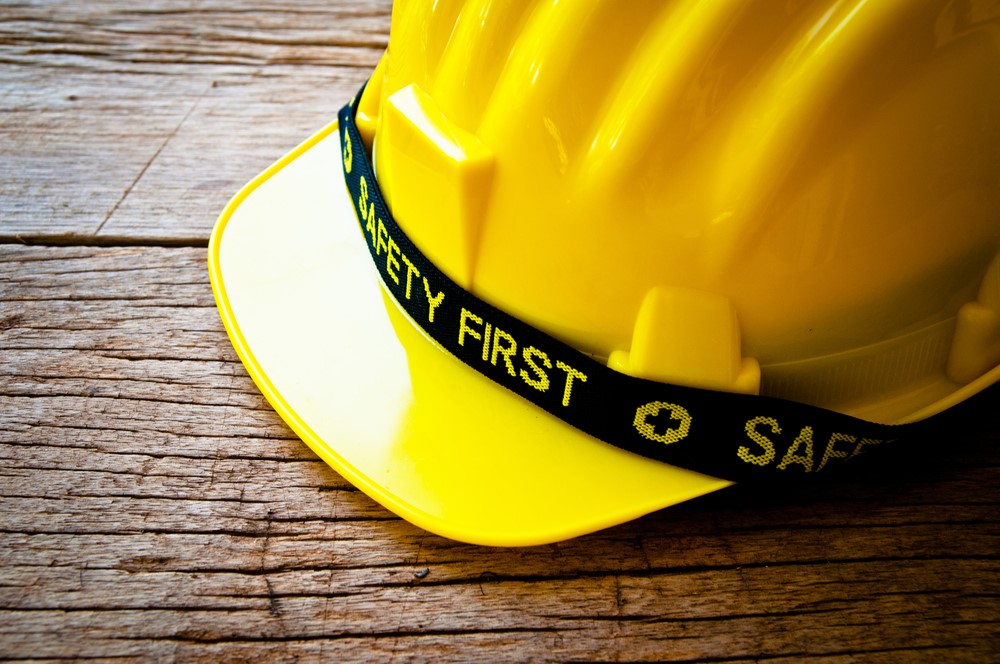 Just like trends in tech (think about the recent uptick in ride-sharing services and Internet of Things devices), the American manufacturing sector ebbs and flows with culture as a whole. Manufacturing jobs are still as important as ever to the American economy — if not more than they once were — but are still subject to major change at the hands of consumer tastes, manufacturing laws and regulations and technological advancements. One thing’s for sure: we’re certain manufacturing jobs aren’t going to be completely taken over by robots (at least not yet), because these jobs are still in high-demand in the American workforce.
Just like trends in tech (think about the recent uptick in ride-sharing services and Internet of Things devices), the American manufacturing sector ebbs and flows with culture as a whole. Manufacturing jobs are still as important as ever to the American economy — if not more than they once were — but are still subject to major change at the hands of consumer tastes, manufacturing laws and regulations and technological advancements. One thing’s for sure: we’re certain manufacturing jobs aren’t going to be completely taken over by robots (at least not yet), because these jobs are still in high-demand in the American workforce.
Over the past few years, the manufacturing sector in the United States has been praised by the media as one of the primary drivers of the country’s economic recovery from the Great Recession. Since 2010, the manufacturing sector has positively contributed to the country’s GDP and the creation of new high-paying jobs. As a result, the continued loss of American manufacturing jobs to automation (i.e. robots), and foreign labor has been a major theme of several political campaigns.
This is, in part, a result of the stings caused by previous economic crises such as the 2008 recession, which are still fresh in the back of the minds of industrial manufacturing companies and Americans as well. In the past, industrial manufacturers were encouraged to invest in new technology and equipment that was expected to improve performances in their factories, and the level of customer service and order fulfillment. However, market crashes and subsequent recessions caused these investments to take years to pay off — if they paid off at all.
While American manufacturing jobs might be facing some severe headwinds, there’s no question that the industry is currently experiencing a renaissance that is changing the technology, worker roles, systems and processes of a modern factory. Regardless of risks and recent history, companies and individuals in the manufacturing industry cannot afford to ignore these changes.
By understanding and facing these changes now, businesses can improve productivity in their warehouses and manufacturing plants. They can also compete effectively against their rivals while maintaining a customer base that is looking to benefit from their innovation. Here are a few of the major trends that face manufacturing jobs in America today.
Technological Advancement
Where software was once the most important way to make economical advancements, luckily for the manufacturing sector, now it’s all about hardware. All of the most cutting-edge tech-makers — Microsoft, Apple, Samsung, Google, Amazon and more — are looking for brand-new ways to integrate technology into physical items (often referred to as IoT, or the Internet of Things devices) such as Bluetooth-equipped watches, voice-activated speakers and even tech-savvy gadgets that can do everything from giving your dog a treat to ensuring that you don’t burn your toast in the morning. The good news for manufacturing? Someone has to make them!
With the cutting-edge technology that is currently available, it is not unusual to expect and prepare for a data-driven factory where all activities and processes are connected and readily accessible by company employees. Managers, workers, and customers will be able to share information regarding product concepts, maintenance, and performance. Factory managers and operators can expect roles to expand from tasks such as the development of procedures and quality assurance, to collaboration with robots for safe and ergonomic use.
You can also expect assembly lines to produce highly personalized products that contain zero defects. Some of the technology driving these changes in factory processes and manufacturing jobs include:
- Advanced robotics
- 3D printing
- Internet of Things (IOT)
- Augmented reality
Companies will increasingly look to hire workers who are familiar with these technologies or train their new hires to utilize them in the workplace.
Impact on the Job Market

While technological advancements affect the processes and workflow in a manufacturing plant, more importantly, the job titles and descriptions of factory workers are also expected to be affected as well. With more companies embracing cutting edge technology such as 3D printing and robotics in their facilities, it is expected that there will be steady growth in factory roles for engineers, designers, and computer systems specialists. On the other hand, roles that manually handle manufacturing and production are expected to decline steadily over the next decade. The decline in these types of roles can be attributed to companies increasingly adopting automation technology that substitutes labor.
Business, sales and financial operations roles are expected to remain steady. However, growth in these positions is expected to be low or declining. As we can see, employment growth is projected to be derived from high-skilled STEM-related areas that may not be able to absorb the job losses that come from other fields in the job market. If the creation of these new STEM-related jobs can offset the job losses, then a significant number of people in the workforce would need to be reeducated and trained again to be able to be qualified for these new jobs.
Companies in industrial manufacturing can also expect to experience a scarcity of highly skilled labor. A lot of facilities and warehouses are continuously raising the bar for the required level of skills, as the technology and processes change and become more advanced. More training and familiarity with new manufacturing and warehouse technology is expected from potential employees, and a lot of individuals who already have those skills and required education are employed. So, companies can expect to compete to attract the available high-skilled talent in the industry.
Increased Efficiency and Safety

In the manufacturing sector, output for workers per hour has increased by over 2.5 times since 1987. Even more impressive is the productivity level increase for manufacturers of durable goods. According to the Bureau of Labor Statistics, they have seen their output triple in that time frame. As a result, American manufacturers have experienced tremendous growth over the past few decades, which has allowed them to become more lean and flexible in their operations.
These manufacturing facilities can carry out more complex processes while making productivity and worker safety a top priority. Take automotive manufacturing companies as an example. Assembling automotive interior trim can be complex because the components are made from a variety of materials which can be very resistant to adhesives. The adhesives have to be applied efficiently and cleanly. Also, the process of dispensing adhesives needs to be cost-efficient and take worker safety into consideration. Finally, the finished product needs to be able to withstand extreme conditions that may occur throughout the lifespan of the vehicle. Having to meet all these demands was tough, however, with more flexible manufacturing plants and trained workers, this process is a lot more efficient.
As all these trends continue, we can expect manufacturing wages to increase for a fixed or decreasing number of workers who are highly skilled. The U.S. manufacturing sector in the future might look a lot like the U.S. agricultural sector — with increased output, productivity and higher wages for declining number of workers who are highly skilled. Nevertheless, manufacturing should remain a vital sector of the economy; especially if the advanced skills gap is addressed, leading to the unconstrained growth of the industry.
Click below for manufacturing jobs in:
Author: Casey Heigl
Casey Heigl is the Marketing Manager for the Heigl Family of Companies. They specialize in industrial adhesive and security distribution services. She loves blogging, gardening, and spending time with her family on the water in Minnesota.


